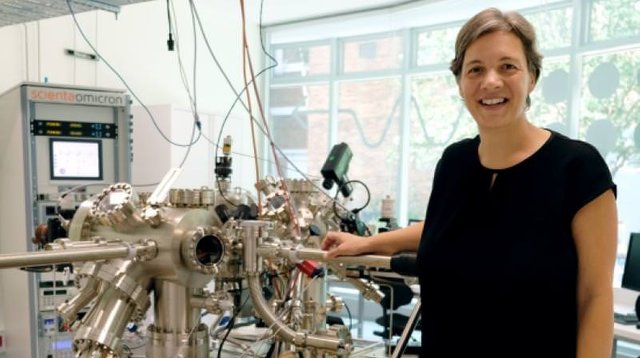Breakthrough in Quantum Computing: Silicon atoms are talking to each other

The remarkable Australian approach of making quantum bits from accurately situated individual particles in silicon is receiving real benefits, with UNSW Sydney-drove researchers appearing out of the blue that they can make two of these molecule qubits "talk" to each other.
The group – drove by UNSW Scientia Professor Michelle Simmons, Director of the Center of Excellence for Quantum Computation and Communication Technology, or CQC2T – is the main gathering on the planet that can see the correct position of their qubits in the strong state.
Simmons' group make the molecule qubits by absolutely situating and typifying singular phosphorus particles inside a silicon chip. Data is put away on the quantum turn of a solitary phosphorus electron.
The group's most recent progress – the main perception of controllable associations between two of these qubits – is distributed in the diary Nature Communications. It takes after two other late leaps forward utilizing this exceptional way to deal with building a quantum PC.
By enhancing their nano-producing process, Simmons' group has likewise as of late made quantum hardware with the most reduced recorded electrical clamor of any semiconductor gadget.
What's more, they have made an electron turn qubit with the longest lifetime at any point detailed in a nano-electric gadget – 30 seconds.
"The consolidated outcomes from these three research papers affirm the amazingly encouraging prospects for building multi-qubit frameworks utilizing our iota qubits," says Simmons.
2018 Australian of the Year motivated by Richard Feynman
Simmons, who was named 2018 Australian of the Year in January for her spearheading quantum registering research, says her group's noteworthy work is roused by the late physicist Richard Feynman.
"Feynman stated: 'What I can't make, I don't get it'. We are ordering that methodology efficiently, from the beginning, particle by iota," says Simmons.
"In setting our phosphorus molecules in the silicon to make a qubit, we have exhibited that we can utilize an examining test to straightforwardly gauge the particle's wave work, which discloses to us its correct physical area in the chip. We are the main gathering on the planet who can really observe where our qubits are.
"Our upper hand is that we can put our superb qubit where we need it in the chip, see what we've made, and afterward measure how it carries on. We can include another qubit adjacent and perceive how the two wave capacities collaborate. And afterward we can begin to produce reproductions of the gadgets we have made," she says.
For the new investigation, the group set two qubits – one made of two phosphorus particles and one made of a solitary phosphorus molecule – 16 nanometres separated in a silicon chip.
"Utilizing terminals that were designed onto the chip with comparable accuracy systems, we could control the connections between these two neighboring qubits, so the quantum twists of their electronsended up associated," says ponder lead co-creator, Dr Matthew Broome, in the past of UNSW and now at the University of Copenhagen.
"It was interesting to watch. At the point when the turn of one electron is pointing up, alternate focuses down, and the other way around.
"This is a noteworthy point of reference for the innovation. These sort of turn relationships are the forerunner to the entrapped states that are important for a quantum PC to capacity and do complex computations," he says.
Study lead co-creator, UNSW's Sam Gorman, says: "Hypothesis had anticipated the two qubits would should be put 20 nanometres separated to see this relationship impact. In any case, we discovered it happens at just 16 nanometres separated.
"In our quantum world, this is a major contrast," he says. "It is likewise splendid, as an experimentalist, to challenge the hypothesis."